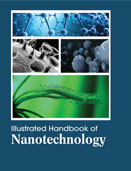Handbooks

After more than 20 years of basic nanoscience research and more than fifteen years of focused R&D under the nanotechnology interventions, applications of nanotechnology are delivering in both expected and unexpected ways on nanotechnology?s promise to benefit society. Nanotechnology is helping to considerably improve, even revolutionize, many technology and industry sectors: information technology, homeland security, medicine, transportation, energy, food safety, and environmental science, and among many others. This illustrated text binds together the principles, theory, and practice of nanotechnology, presenting a comprehensive, yet convincing, introduction to the possibilities and limitations of this exciting and rapidly developing field.
Nanotechnology is a topic that spans a range of science and engineering disciplines. It is manipulation of matter on an atomic, molecular, and supramolecular scale.
Illustrated Handbook of Nanotechnology brings together the principles, theory, and practice of nanotechnology, giving a broad, yet authoritative, introduction to the possibilities and limitations of this exciting and rapidly developing field. The implications of nanotechnology are wide-ranging and could include medicine, military applications, computing and astronomy. Nanotechnology is being used already in certain materials like self-cleaning glass, sunscreens, lipsticks and even antibacterial socks! Future applications for nanotechnology seem only to be limited by the creativity of researchers. Nanotechnology may be used to deliver drugs to just the right place inside the body. There are even scientists who think that nanofoods could be used to trick the body into feeling fuller for longer, stopping us from overeating. Instruction of smaller circuits and computers. Smaller circuits will run faster enabling far greater computer speeds. New nanomaterials will mean that computers will have a much longer life. A laptop computer could therefore have its efficiency increased by millions living longer and working faster to give far better value for money. For the environment and energy, nanotechnology will have a significant impact. For instance, nanometer sized solar cells could be developed to provide much of the energy needed around the world and nanomaterials will increase the efficiency of fuel cells and batteries. In the future nanotechnology will be used to tackle environmental problems. New ?green? processing technologies will minimise the generation of undesirable by-product effluents by curbing emissions. In health care and medicine biological nanosensors are being developed in the next 5 years and will be used for fast and accurate diagnostics. Nanotechnology offers major opportunities for the economy and it is key that it is allowed to thrive, building upon the countries excellence in its science and technology base. Illustrated Handbook of Nanotechnology presents an in-depth understanding of the workings of living organisms from all areas of life at the molecular level. This Handbook is specially designed for the students and novice researchers within molecular biology or molecular genetics, including entomologists, evolutionary and systematic biologists, geneticists, physiologists, biochemists, and molecular biologists.